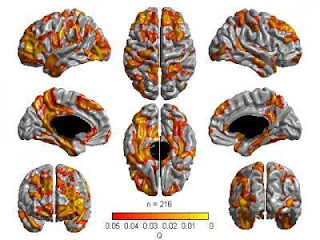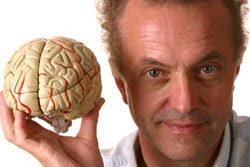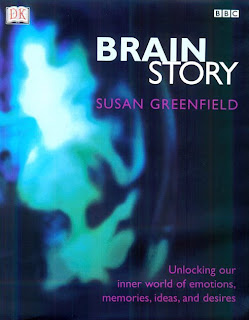A collaborative study led by researchers at the Montreal Neurological Institute (MNI), McGill University has demonstrated a positive link between cognitive ability and cortical thickness in the brains of healthy 6 to 18 year olds. The correlation is evident in regions that integrate information from different parts of the brain.
Areas in the brain where there is an association between general cognitive ability and cortical thickness. (Credit: Montreal Neurological Institute)
The imaging study published this week in a special issue of scientific journal Intelligence is the largest and most comprehensive of its kind with a representative sample of healthy children and adolescents.
This study stems from the NIH MRI Study of Normal Brain Development, for which the MNI was the data coordinating centre. The database contains MRI scans and other data on the structure and function of the developing brains. More than 500 children and adolescents from newborns to 18-year-olds had brain scans multiple times over a period of years as well as intelligence, neuropsychological, verbal, non-verbal and behavioural tests. This information is now contained within the database allowing scientists to study how normal developmental changes in brain anatomy relate to motor and behavioural skills, such as motor coordination and language acquisition. Even higher-order skills like planning, IQ, and organizational skills can be assessed.
Previous studies have shown that intelligence and cognitive ability are correlated with regional brain structure and function. The association between regional cortical thickness and intelligence has been little studied and most previous studies of normal children had a relatively small sample. So with improvements in MRI-based quantification of cortical thickness and a much larger sample, researchers aimed to examine this relationship and to further characterize and identify brain areas where cortical thickness was associated with cognitive performance.
Cortical thickness may in part reflect the amount of complex connections between nerve cells. In other words, thicker cortices are likely to have more complex connections with consequences on cognitive ability. A positive link between cortical thickness and cognitive ability was detected in many areas of the frontal, parietal, temporal and occipital lobes. The regions with the greatest relationship were the 'multi-modal association' areas, where information converges from various regions of the brain for processing.
"A principal finding of this study is that it supports a distributed model of intelligence where multiple areas of the brain are involved with cognitive ability difference instead of the view that there is just one centre or structure important for intelligence differences in the brain," says Dr. Sherif Karama, psychiatrist at the MNI and co-investigator in the study. "Previous studies have shown a link between intelligence differences and individual brain structure or function. This is the first time that a correlation between a general cognitive ability factor and essentially most, if not all, cortical association areas is demonstrated in the same study."
A deeper insight into normal cognitive functioning and abilities is an important first step in the understanding of cognitive decline observed in the elderly as well as in those with various pathologies ranging from multiple sclerosis to schizophrenia, depression and mental retardation. Such an understanding may eventually lead to interventions that may be able to prevent or alleviate the decline or complications in cognitive function.
The project was funded by National Institute of Child Health and Human Development, the National Institute on Drug Abuse, the National Institute of Mental Health, and the National Institute of Neurological Disorders and the Fonds de Recherché en Santé du Quebec (FRSQ).
Areas in the brain where there is an association between general cognitive ability and cortical thickness. (Credit: Montreal Neurological Institute)
The imaging study published this week in a special issue of scientific journal Intelligence is the largest and most comprehensive of its kind with a representative sample of healthy children and adolescents.
This study stems from the NIH MRI Study of Normal Brain Development, for which the MNI was the data coordinating centre. The database contains MRI scans and other data on the structure and function of the developing brains. More than 500 children and adolescents from newborns to 18-year-olds had brain scans multiple times over a period of years as well as intelligence, neuropsychological, verbal, non-verbal and behavioural tests. This information is now contained within the database allowing scientists to study how normal developmental changes in brain anatomy relate to motor and behavioural skills, such as motor coordination and language acquisition. Even higher-order skills like planning, IQ, and organizational skills can be assessed.
Previous studies have shown that intelligence and cognitive ability are correlated with regional brain structure and function. The association between regional cortical thickness and intelligence has been little studied and most previous studies of normal children had a relatively small sample. So with improvements in MRI-based quantification of cortical thickness and a much larger sample, researchers aimed to examine this relationship and to further characterize and identify brain areas where cortical thickness was associated with cognitive performance.
Cortical thickness may in part reflect the amount of complex connections between nerve cells. In other words, thicker cortices are likely to have more complex connections with consequences on cognitive ability. A positive link between cortical thickness and cognitive ability was detected in many areas of the frontal, parietal, temporal and occipital lobes. The regions with the greatest relationship were the 'multi-modal association' areas, where information converges from various regions of the brain for processing.
"A principal finding of this study is that it supports a distributed model of intelligence where multiple areas of the brain are involved with cognitive ability difference instead of the view that there is just one centre or structure important for intelligence differences in the brain," says Dr. Sherif Karama, psychiatrist at the MNI and co-investigator in the study. "Previous studies have shown a link between intelligence differences and individual brain structure or function. This is the first time that a correlation between a general cognitive ability factor and essentially most, if not all, cortical association areas is demonstrated in the same study."
A deeper insight into normal cognitive functioning and abilities is an important first step in the understanding of cognitive decline observed in the elderly as well as in those with various pathologies ranging from multiple sclerosis to schizophrenia, depression and mental retardation. Such an understanding may eventually lead to interventions that may be able to prevent or alleviate the decline or complications in cognitive function.
The project was funded by National Institute of Child Health and Human Development, the National Institute on Drug Abuse, the National Institute of Mental Health, and the National Institute of Neurological Disorders and the Fonds de Recherché en Santé du Quebec (FRSQ).
Source:
McGill University. "When It Comes To Intelligence, Size Matters."













